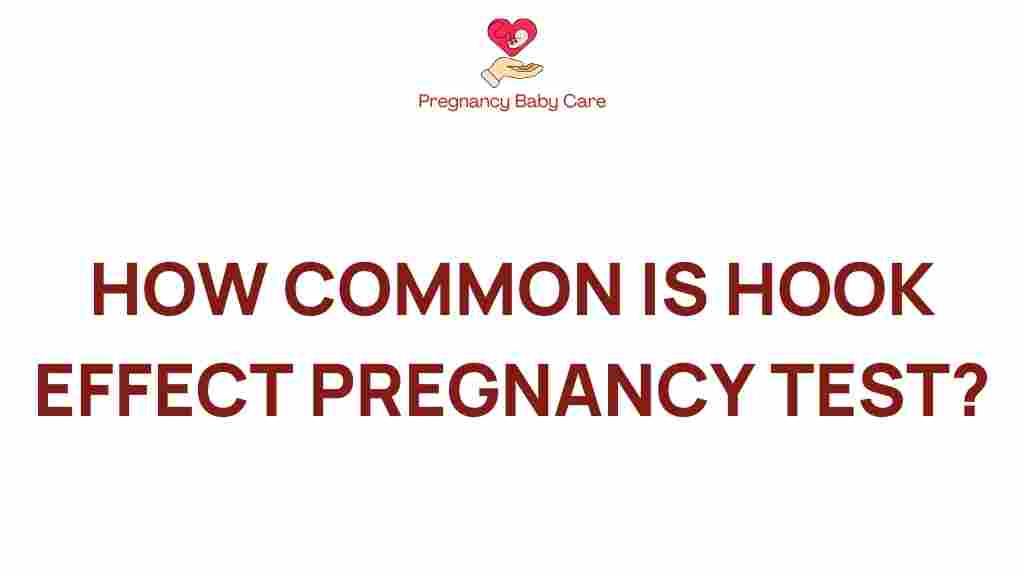The Hook Effect: How Common Is It in Pregnancy Testing?
When it comes to pregnancy testing, accuracy is paramount. Many women rely on home pregnancy tests to confirm their pregnancy status, but there are instances where these tests can yield misleading results. One such occurrence is known as the hook effect. This phenomenon can lead to false negatives, leaving individuals confused and uncertain about their pregnancy. In this article, we will explore the hook effect in detail, how it affects pregnancy tests, and what you can do to ensure accurate results.
Understanding the Hook Effect
The hook effect occurs when extremely high levels of human chorionic gonadotropin (hCG) interfere with the pregnancy test’s ability to detect the hormone. hCG is produced by the placenta shortly after a fertilized egg attaches to the uterine lining, and its levels rise rapidly in early pregnancy. However, in rare cases, such as in certain medical conditions or multiple pregnancies, hCG levels can become so elevated that they overwhelm the test’s detection capabilities, leading to inaccurate results.
How Common Is the Hook Effect?
The hook effect is relatively uncommon but can happen. It typically arises in specific circumstances, including:
- Multiple gestations (twins or more)
- Certain medical conditions, such as trophoblastic disease
- After infertility treatments that lead to elevated hCG levels
Knowing how frequently this occurs can help individuals recognize when to consider alternative testing methods to confirm pregnancy.
How Pregnancy Tests Work
Before diving deeper into the hook effect, it’s essential to understand how pregnancy tests function. Most home pregnancy tests operate using a similar mechanism:
- Detection of hCG: Pregnancy tests typically use antibodies that react to hCG in urine.
- Test Line and Control Line: If hCG is present, the test line will appear alongside a control line, indicating a positive result.
- Sensitivity: Different tests have varying sensitivities, meaning some can detect lower levels of hCG than others.
Step-by-Step Process of Pregnancy Testing
To ensure accurate results when using a pregnancy test, follow these steps:
- Choose the Right Test: Select a test that has high sensitivity and is well-reviewed for its accuracy.
- Read the Instructions: Follow the manufacturer’s guidelines precisely for optimal results.
- Timing: Test after your missed period for the most accurate results. Testing too early can lead to false negatives.
- Collect a Sample: Use the first morning urine for the highest concentration of hCG.
- Wait for Results: Allow the recommended time before reading the result to avoid misinterpretation.
- Confirm Results: If you receive a negative result but suspect you are pregnant, wait a few days and test again.
Testing Accuracy and the Hook Effect
While most pregnancy tests are quite accurate when used correctly, the presence of the hook effect can skew results. Here’s how:
- High hCG Levels: The hook effect can cause the test to show a negative result even when hCG levels are high, leading to confusion.
- Medical Insights: If you suspect the hook effect, consult with a healthcare provider for blood tests that can measure hCG levels more accurately.
Troubleshooting False Negatives
If you receive a negative pregnancy test result but still believe you may be pregnant, consider the following troubleshooting tips:
- Wait and Retest: Wait a few days and take another test. Hormone levels increase rapidly in early pregnancy.
- Check for Expiration: Ensure the test hasn’t expired, as this can affect its accuracy.
- Consult a Doctor: If you continue to test negative but exhibit pregnancy symptoms, seek medical advice.
- Consider Blood Tests: A healthcare provider can conduct blood tests to measure actual hCG levels, offering a clearer picture.
Health Awareness and Education
Understanding the hook effect is vital for health awareness, especially for those trying to conceive or undergoing fertility treatments. By being informed about testing accuracy and how hormone levels can impact results, individuals can make better decisions regarding their health.
In addition to the hook effect, being aware of other factors that may influence pregnancy test results is essential:
- Medications: Some medications, such as fertility drugs, can affect hCG levels.
- Timing: Testing too early can lead to negative results even if pregnancy has occurred.
- Hydration Levels: Excessive fluid intake before testing can dilute urine, potentially affecting results.
Conclusion
The hook effect can lead to false negatives in pregnancy testing, creating confusion for those eager to confirm their pregnancy. While this phenomenon is not common, it is essential to be aware of it, especially if you have high hCG levels due to certain medical conditions or multiple pregnancies.
By following proper testing protocols and consulting healthcare professionals when in doubt, individuals can navigate the complexities of pregnancy testing with greater confidence. For more insights on pregnancy and health, consider visiting health organizations that provide valuable resources and information.
For additional information on pregnancy tests and the hook effect, you might find this resource helpful in enhancing your understanding.
This article is in the category Pregnancy and created by PregnancyBabyCare Team
